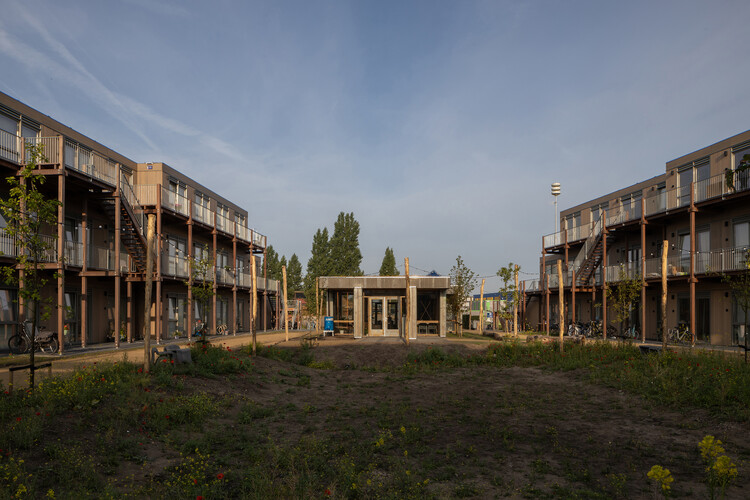
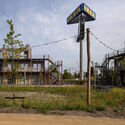
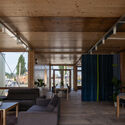

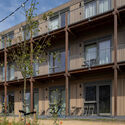

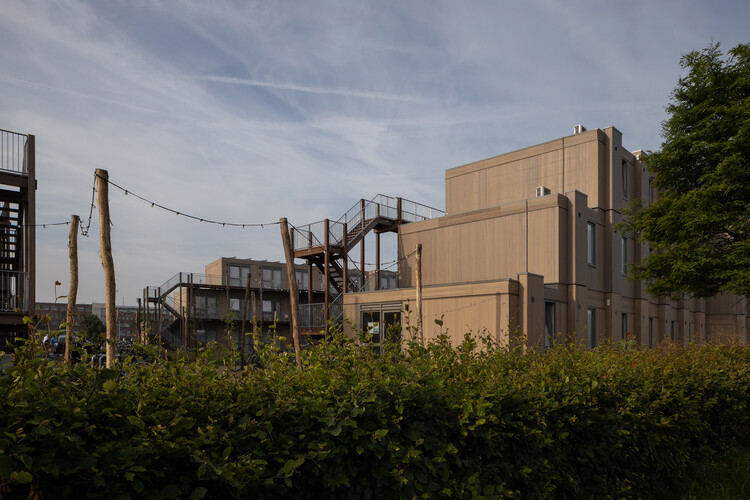
Description of the text provided by the architects. For the municipality of Haarlem, we have developed a design for temporary housing for around 200 refugees from Ukraine. This project builds on our research done on behalf of the Dutch Government’s Real Estate (Rijksvastgoedbedrijf) published as «Woonkwaliteitsplan FLEXwonen.» It gave us a unique opportunity to translate theoretical insights into practical solutions, exploring and implementing the potential of high quality flexible housing. .
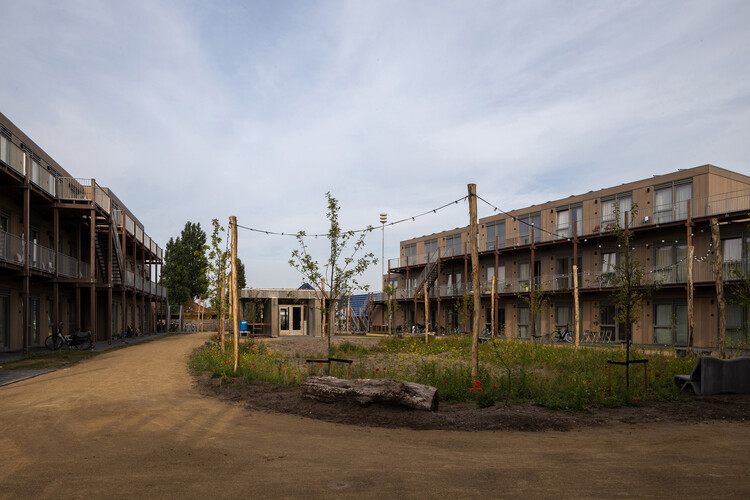
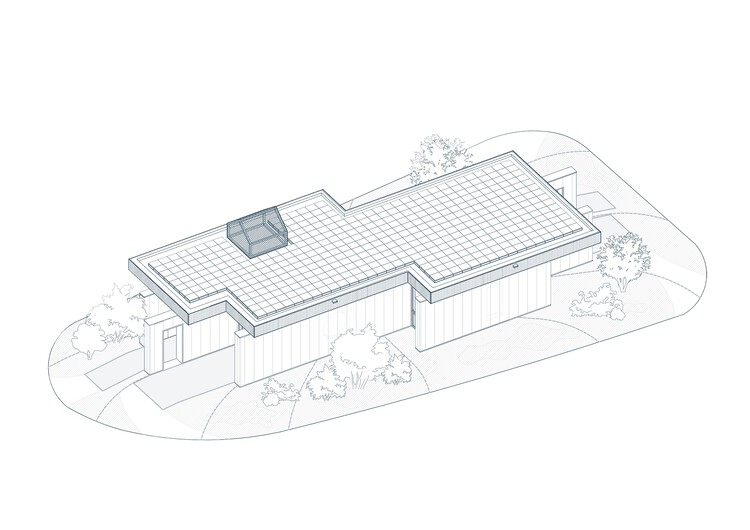
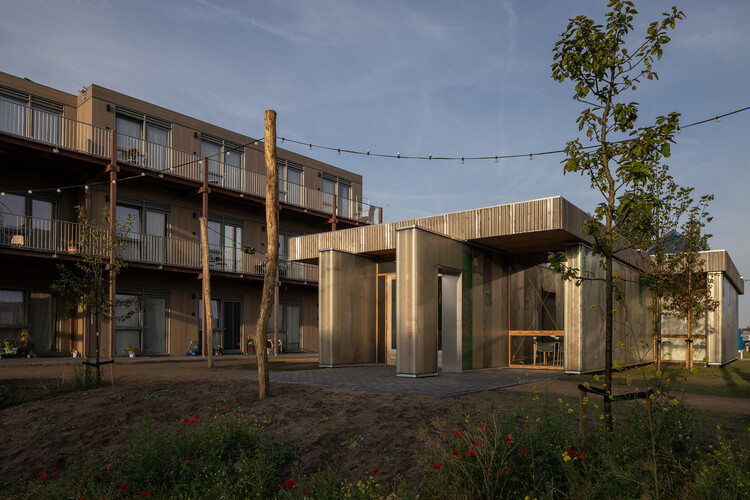
The chosen location, an industrial area surrounded by highways, railways and large parking lots, was a significant challenge. Despite this, we focused on creating a welcoming living environment by centering the housing around a shared courtyard. This courtyard, which is partially enclosed to provide shelter and maintain links with the surrounding environment, is the heart of the project. It provides space for residents to relax and socialize, ensuring they feel connected to their surroundings while enjoying a sense of privacy.
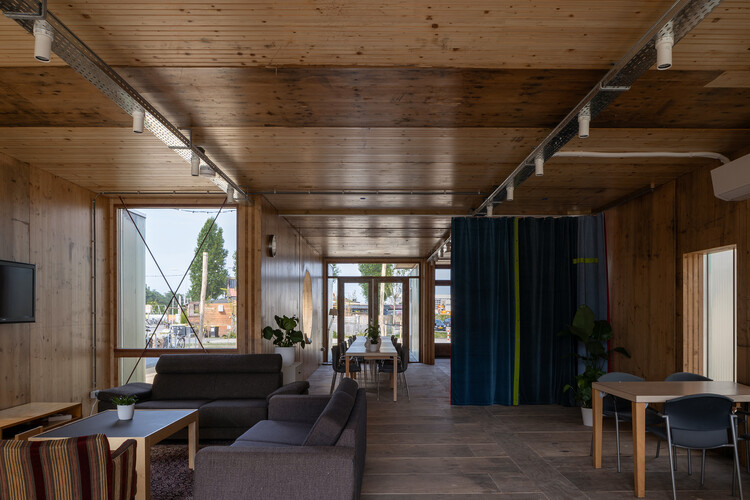
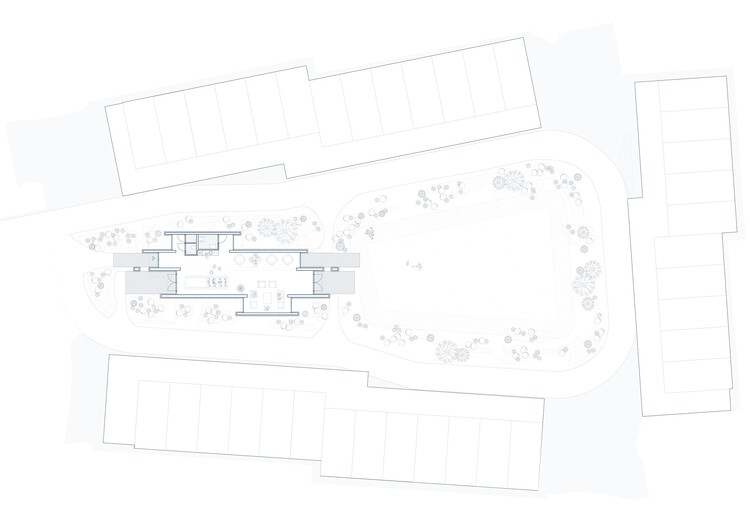
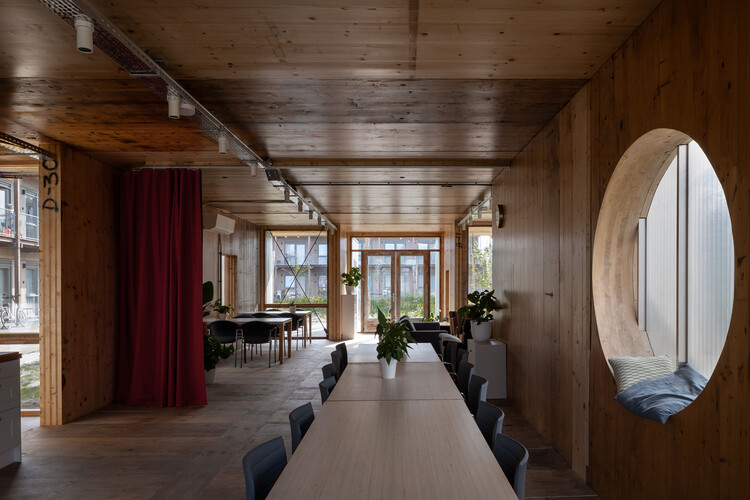
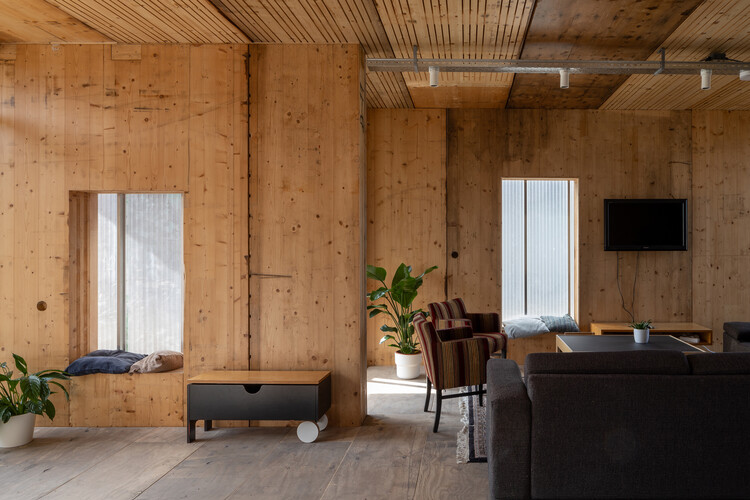
The temporary homes themselves are designed with a strong emphasis on sustainability and circularity. A total of 86 houses were created, most of them 24 m², and a few larger ones of 48 m² designed for families. The housing blocks are made up of three stories, with a stepped configuration that adds visual interest and breaks up the mass of the building. Built using a lightweight timber frame, these homes eliminate the need for a pile foundation. The units are fully demountable and reusable, with steel beams on precast concrete slabs as a foundation. The facades were prefabricated off-site and partially finished in situ, with the joints between the units carefully concealed for a seamless appearance.
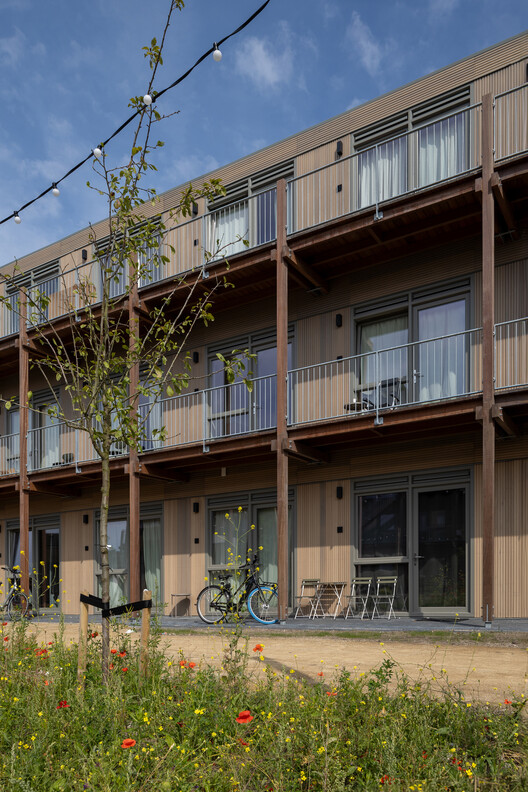
A central feature of the project is the circular community space, which plays a vital role in fostering a sense of community among the residents. Built from 80% recycled materials, this space is strategically located between the public area and the courtyard, offering transparency and privacy. The communal space can be opened during good weather, allowing the outdoor area to be an extension of the indoor space. The design is fully modular and demountable, enabling easy relocation and reassembly after five years. Inside, different zones are designed for different activities, such as communal dining, celebrations, and relaxation.
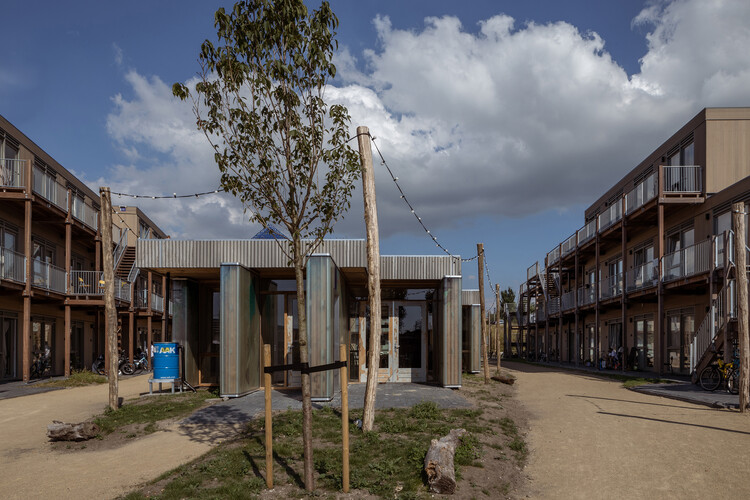
The interior furnishings for the communal space were sourced from second-hand shops around Haarlem and Scheveningen, reinforcing the circular ethos of the project while creating a warm and welcoming atmosphere. In addition, the topography of the site was used to enhance the design, with a central swale that acts as a water buffer during heavy rain and as a play area during dry weather. Carefully placed lighting ensures that the environment remains welcoming and comfortable in the evening.
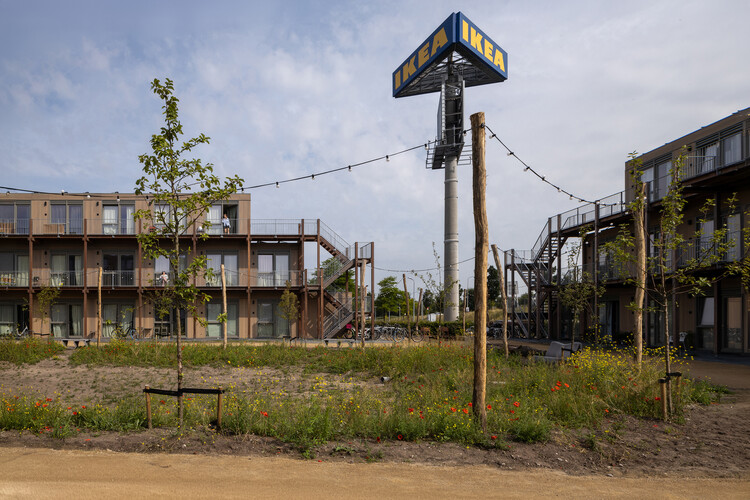
This project shows that temporary housing can be functional and of high quality. Despite the challenges of the site, we have tried to create a living environment that is attractive, sustainable and community-oriented. It shows that, even in demanding circumstances, it is possible to provide valuable and comfortable living space for those in need, demonstrating a forward-thinking approach to temporary housing solutions.
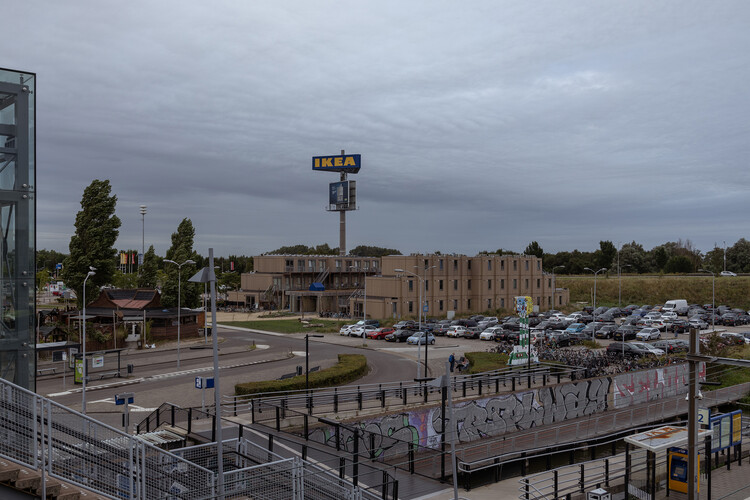
#Circular #Living #Room #Temporary #Housing #VLOT #architects